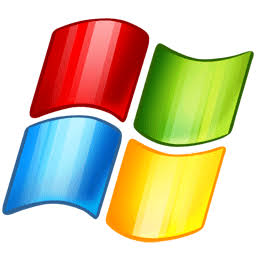If you develop with MySQL on a Mac…
Sequel Pro > Sequel Ace ;)
But compiz…
deleted by creator
That’s a super chill maneuver
Damn, there’s an app I haven’t heard of in years. Too bad I don’t have more of a need for a sandbox app than the built in Windows Sandbox app or I might give it a shake.
deleted by creator
it’s a wonderful feeling when that happens!
I don’t usually get my hopes up, but yes, it is a wonderfull felling when it happens.
vi?
rimusic
vim, or better yet, neovim
come to the 21st century, we have lua
and plugins, and syntax highlighting, and multi buffer/multi window support, and LSP support so you can Go to Definition like in an IDE, and wAY more normal mode commands than anyone could ever hope to memorize. also when you do
cwit deletes the word immediately instead of putting a dollar sign at the end before purring you in insert mode, and regex substitutions highlights text in the buffer as you type so you can see what you’re about to replace. it’s really quite cool. if you’re new to programming and/or feel like committing heresy you can even skin it to look and work like VS Code. people like to joke that we’re slowly but surely becoming emacs and they’re not entirely wrong.but the important thing is the lua.
Used vim since the mid 90’s, but switched to emacs at some point. It was wonderful for many years, but neovim has come so far that I switched back a few years ago. Could not be happier. The tools available for programmers these days are superb and neovim chief among them.
I mean, most of those things can be done in regular vim too. I’m probably going to switch eventually, but I haven’t really had any issues with vim that would motivate me to switch, and I haven’t really encountered anything super useful that nvim has that vim can’t also do. Though, I’ll admit lua is tempting, and better defaults are certainly a plus!
For search highlighting, the relevant options are
:set hlsearchand:set incsearch. nvim just has those enabled by default. nvim also has a binding Ctrl+L to clear the search highlight. This isn’t in vim by default, but the vim-sensible plugin also adds it.What do you mean by
cwputting a dollar sign? I don’t think I’ve ever encountered that.Edit: the vim syntax for Ctrl+L got eaten by markdown.
Vim and Neovim are pretty similar at this point honestly apart from the Lua. The only difference I’ve really noticed is that in Neovim, when you
:term, it opens the terminal in the active pane, putting the buffer you were working on in background. In Vim, it splits the screen and puts the terminal there. Vim also prompts you to confirm a:eif you haven’t saved the current buffer, even though it doesn’t close it, just puts it in the background (iirc?)In the original vi, when you
cwit doesn’t delete the word right away, only changing the last character of it to a $ so you can see where it ends, to save screen refresh. (This was actually a concern on the 1970s modems on which vi was developed.) When you type, it looks like you’re overtyping the word, but when you go back to normal mode it redraws the line and shows the rest of the line shifted over appropriately, so you replaced the whole word. Vim and Neovim redraw the line with every keystroke, which is not a problem even on today’s shoddiest internet connections, and is much more intuitive. vi only starts to do that once the word you’re typing becomes longer than the word it’s replacing.
It’s probably because of Lua that the plugin ecosystem exploded in the recent years.
I’m glad I adopted neovim early.
Gitea -> Forgejo, e.g.
Is that really the case? I selfhost gitea and am pretty happy with it.
They’re both pretty on par for the most part. If it’s too much of a hassle, there’s no real need to switch.
Now that Gitea is owned by a for-profit company, people are afraid that they’ll be making anti-user changes. This, Forgejo was born. It pulls from Gitea weekly, so it’s not missing anything. It’s also got some of its own features on top, but they’re currently pretty minor. Also, most of the features end up getting backported back to Gitea, so they’re mostly on par with each other. However, many features find themselves in Forgejo first, as they don’t have the copyright assignment for code that Gitea does. Additionally, security vulnerabilities tend to get fixed faster on Forgejo. They are working on federation plans, however, so we’ll see how that pans out.
Overall, there’s no downside of switching to Forgejo, and you’ll probably be protected if Gitea Ltd. makes some stupid decisions in the future. However, at the moment, there’s no immediate advantage to switching, so you can stick with Gitea if you’d like.
I thought gitea was doing federation too? Im pretty excited about that part, as I’ve wanted to move away from GitHub but the visibility it gives is just on another level. Users can’t register on my instance, therefore they also can’t open issues and PRs.
Is switching to forgejo more work than just changing my compose file a little? I hope my database can get transferred.
The developer working on federation plans to merge the changes into forgejo first and then from there into gitea but I’m not sure in how far the recent changes to gitea’s CLA have affected those plans.
Forgejo is a drop in replacement (they are committed to keeping it that way for as long as possible) so, as far as I know, simply changing the gitea image to the forgejo image is all you would need to do.
What happened to gitea?
afaik it got bought by some company and people fear that there will be anti-user changes like with all the other open source projects that were bought by a company in recent years.
Ah ok
No company has bought gitea. They just made a commercial entity which can accept contracts for enterprise installations and make some hyper specific customisations not needed for normal users (like some specific mode of internal authentication) in those installations. So far Gitea has been great still.
They did start a cloud service for hosting Gitea which introduces a direct incentive for them to make Gitea less hosting friendly by, for example, making newly added configuration options less comfortable to set up. And more recently some changes to code contributions that are not exactly community friendly (as a result forgejo will be unable to upstream some of their changes)
What lead to Forgejo, as far as I am aware, was less a problem that is already there and more the set of problems that have a very high chance of eventually manifesting, at which point forking the project would be too late.
The security implications on this page concern me: https://forgejo.org/compare/#better-security
I want to like Forgejo but the name is really terrible.
Is it “forj-joe”? Nah, that double-J sound is way too awkward.
Do you then merge the J sounds to make “forjo”? If so, why not just call it that?
Is it maybe “for-geh-joe”? That seems the most likely to me, but then that ignores the “build < forge” marketing on their website.I know it’s pretty inconsequential, but it feels weird using a tool that you don’t even know how to pronounce the name of.
There is an official pronounce on the site. It comes from Esperanto anyway.
Bonvolu alsendi la pordiston? Lausajne estas rano en mia bideo!
Love me some Red Dwarf!
Of course, the international non-ambiguous language.
You mean lojban or toki-pona?
Yeah, like the other person mentioned, the origins of the word and its pronunciation are the very first thing in the FAQ on their website. It’s pronounced more like for-jey-oh.
Thanks! That’s how I read it as a joke, but why not?
For yay ho would be too much though.
Gitea is still maintained though?
They got bought so people jumped ship, I haven’t heard anything bad personally
Yes as you say, I think they’re still pretty fine, though I do prefer Codeberg as a hosted solution myself and in turn Forgejo, especially for their federation plans
Gitea has federation plans too though?
Oh, I wasn’t updated on that, I honestly don’t know which came first
Looking at the forgejo issue, the dev working on the federation tools for gitea had worked for 6 months (initial issue opened Jan 2022) before opening the issue Nov 2022 with the initial goal being to merge into forgejo and then merge that upstream with gitea
Yeah Fogejo is amazing. Moved all my personal projects from GitLab to Codeberg recently. Wish I knew about it sooner
Simplemobiletools --> Fossify is pretty epic
Do the Fossify versions already have new features? I’ll still using Simple Mobile Tools from F-Droid, without ads, and am asking if it makes sense to download Fossify apps already
Better UI but no video editing for gallery
Looks like simple mobile tools is unmaintained
No big changes yet afaik but its a good idea to switch anyways
What happened with simplemobiletools?
dev sold it to a shady company
https://github.com/SimpleMobileTools/General-Discussion/issues/241#issuecomment-1837102917Ah thanks. Missed that. So it’s time to move on.
They have material you by default instead of the weird accent theming there was before
Mostly minor improvement, such as the fossify phone app grouping by date in the call history
Slic3r -> PrusaSlicer -> SuperSlicer
Although I’d love to agree superslicer has sadly nowhere near the development power of prusa behind them - and feature parity is rarely given, basically any release of the two has “oh I want both of those!” (don’t know if it’s spelled correctly but arachnid mode for example was hyped to a point I checked back with prusa after a few months).
I just want to point it out in case people expect a “prusaslicer” but better in every regard :)
If this is the case, why doesnt superslicer upstream its changes to prusaslicer? :/
I can’t answer that and it’s a valid question in my opinion. If I had to guess I’d speculate about disagreements in code style, build pipeline or similar.
Thats usually how it goes. Imo, and to be clear im a major foss person, they are contributing so they should accept the prusaslicer guidelines but maybe have an open discussion about.
I havent seen the prusaslicer code yet so i have no how bad either project is though :p
Oh yeah, I find that it’s easier to get fine control of the outcome in SuperSlicer because it’s less refined. User-friendly features are nice when you’re getting started but a hindrance when you have more experience. I tried to use Cura awhile back and it felt like the Fisher-Price version of a slicer. SuperSlicer is probably less accessible overall, but it doesn’t hide controls from me.
I will borrow The fisher-Price phrasing, thank you for that! Fully agree on the cura part.
It may be a game, but…
Pixel Dungeon -> Shattered Pixel Dungeon
SPD is already pretty good though, why is PD better?
PD is the original, SPD is the fork
Sorry, that’s now how I meant my original post - I just thought that I really like SPD already and was interested in what PD makes better/ what features SPD missed. I in no way wanted to say that PD was bad, just was excited to know what PD made better :)
I think you are misinterpreting the arrows. Pixel dungeon is the original game with SPD being the preferred fork
The arrows aren’t PD > (greater than) SPD
But rather PD -> (turned into) SPD
Ahhhh, that makes sense! Thank you, I got very confused - you clarified it a lot :)
Synergy -> Barrier
Does it have Wayland support yet?
No, but Lan Mouse does! https://github.com/feschber/lan-mouse
I actually paid for synergy because I was using it extensively back in the day (probably about 10 years ago? Maybe less? IDK. Long enough that I don’t care to remember when); and after an update I realized the windows service portion had a bad memory leak. I don’t reboot my PC very often, so I kept getting memory errors despite having more memory than the average (I believe it was 24G at the time, when 8G was considered “good” instead of it being the bare minimum that it is now)… I couldn’t even always fix it by restarting the service, since it was some kind of memory mapped file or something that was causing the problem, so it didn’t register normally that the process was consuming the space. The only way to fully resolve the problem was to disable the service (or remove the software) and restart. So I abandoned synergy for a long time because I wasn’t sure when they would actually recognize the problem and fix it.
I got a notice late last year that synergy had updated and my license was going to be given a free upgrade so I could use the newer version at no extra cost, so I figured it would be a good time to try it again, and I had a situation come up in December (ish) where I actually wanted to see if I could get it working; I couldn’t. Now that I’m running exclusively multi monitor setups, synergy’s configuration doesn’t actually give you the option of setting where your screens are connected individually or anything, it just shows each PC as a single display, and for the life of me, not only could I not get it right, but I couldn’t even find the trigger point that would move my mouse and keyboard controls to the other system. Even if I managed to get them over there, I had no idea how, and I had no idea how to get back.
So I disconnected it entirely and I’m back at square one. I bought a multimonitor KVM to fix another problem and it reduced or eliminated my need to use synergy… But I still want synergy to work (or something like it). Is barrier more robust?
Just try it. It’s free.
Sounds like you’d like Mouse Without Borders
Does this only work for Windows?
I was hoping for something cross platform. Since synergy sucks and will probably continue to suck for a while, I’d like to find something in the interim, or to replace it entirely so I can control a Linux system from my windows PC, or something like that.
Don’t get me wrong, this is great for Windows, but I originally got synergy because I was using a Linux system as a media player, so I could mouse over and change tracks or load a playlist or whatever I wanted to do without having to reach across the room for another keyboard or something like that.
I haven’t used that set up in a while, though I might switch back to it with a raspberry Pi or something eventually, and just have a small micro system playing media using chromium to load up YouTube music (or whatever). The old set up was the Linux system using xmmp (I believe) to play music from a NAS. The output went through a physical mixer, so I had immediate access to turn up, or down, the music from my media system, without dedicating resources to music on my main (gaming) system. This was back in the days of Windows XP and I wanted to squeeze every last FPS I could from my main system, so I offloaded my music to another system; which was some old P4 that I had lying around. The HDD was questionable so I never put anything on it that I couldn’t lose, hence all the music was on my network storage.
At the same time I was using the network storage system (I call it a NAS, but it was really a Windows box with some file shares) to do other offloading tasks, like downloading Linux ISOs from torrent files.
I did a lot to ensure my system would not get bogged down. I have servers now for any file shares and torrent stuff, but I’ve never solved the media system problem. Using a pi or similar SBC and piping the audio through the mixer I still have connected to my main computer is still appealing to me… Among other things… And just putting up a display for it next to my monitors and roaming my mouse and keyboard to it to pick what I want to watch/listen to, still seems like a good idea to me.
I don’t want to get restricted to Windows to do it though, since then I would need a much more power-hungry system to run it. I’ve concerned myself a lot more with efficiency since I was younger, considering that I’m paying for my own power now. Historically, I would be paying for it through rent that includes utilities. I own a house now and pay all my own utilities. So a sub 10W pi sounds good. Most windows systems, even very lightweight systems usually need at least double that.
VNC into the device.
I’m not sure I can drive any more screens on my main computer.
Why? I mean VNC in when you need access/to change something. Not all the time.
So you’re proposing I use vnc to connect to a media system whenever I want to skip a track?
Yt-dl - > yt-dlp
YT-DL is greater than YT-DLP?
Edit: Oh, it’s an arrow. Got it.
Clementine -> Strawberry :)
What’s Strawberry?
Well, a fork of Clementine :) Both are great music players that have a playlist-centered approach to music. Have been exclusively using them on my computer since many years.
Amarok -> Clementine -> Strawberry
Hyperion -> HyperHDR
Neolink
Me with Liftoff :)
Liftoff is no longer maintained right? So what’s the fork?
Is there a fork being maintained? I haven’t seen one. Was just poking around for one yesterday.





















